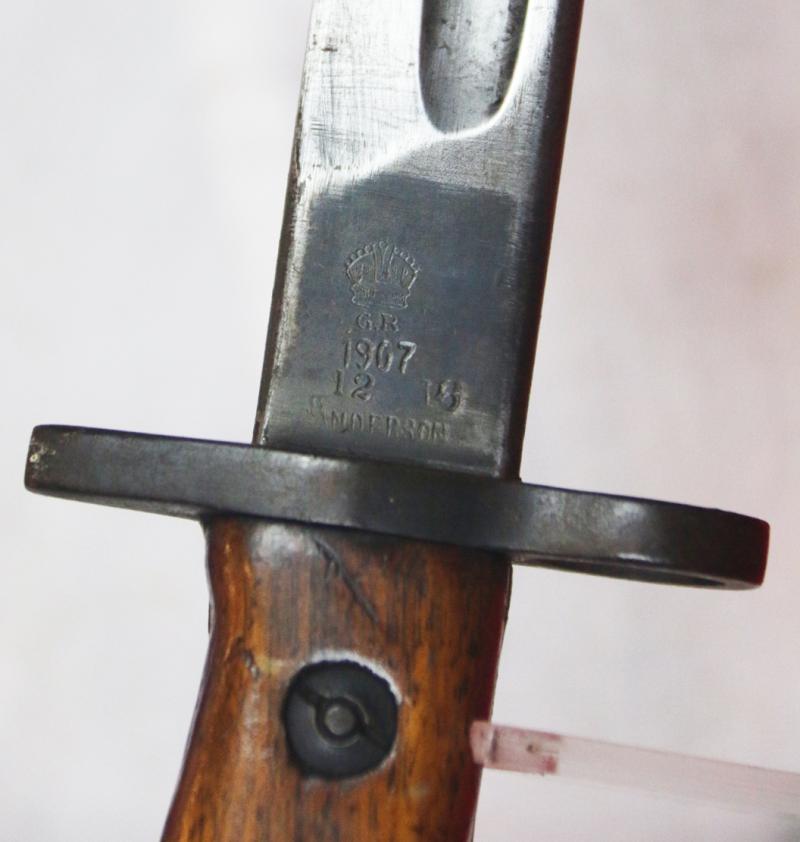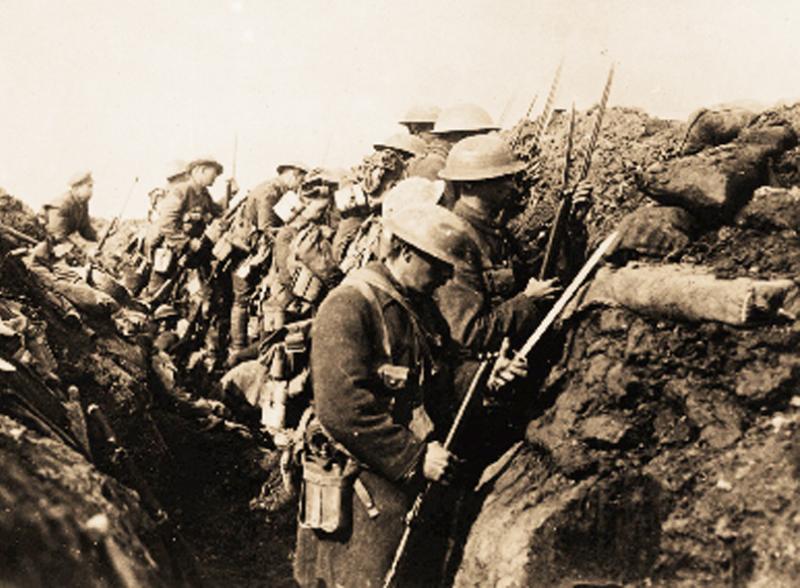A WW1 British Army Standard Issue SMLE Enfield .303 MK3 Rifle Sword Bayonet, by Sanderson. Used In Combat Service in WW1 and WW2
In very good condition entirely rust free, with original blueing on the scabbard mounts and blade ricasso.
The Lee–Enfield rifle was derived from the earlier Lee–Metford, a mechanically similar black-powder rifle, which combined James Paris Lee's rear-locking bolt system that had a barrel featuring rifling designed by William Ellis Metford.
We bought the entire small collection from the widow of a 'Best of British Empire Rifles and Bayonets, Both British and German' collector, who acquired them over the past 40 years, and only ever kept the very best he could afford to keep. Act fast they are selling really fast, three rifles and eight bayonets and a cutlass have sold in two days alone.. Top quality and condition,19th and 20th century scarce British and German collectables are always the most desirable of all.
The Lee action cocked the striker on the closing stroke of the bolt, making the initial opening much faster and easier compared to the "cock on opening" (i.e., the firing pin cocks upon opening the bolt) of the Mauser Gewehr 98 design. The Lee bolt-action and 10-round magazine capacity enabled a well-trained rifleman to perform the "mad minute" firing 20 to 30 aimed rounds in 60 seconds, making the Lee–Enfield the fastest military bolt-action rifle of the day. The current world record for aimed bolt-action fire was set in 1914 by a musketry instructor in the British Army—Sergeant Instructor Snoxall—who placed 38 rounds into a 12-inch-wide (300 mm) target at 300 yards (270 m) in one minute. Some straight-pull bolt-action rifles were thought faster, but lacked the simplicity, reliability, and generous magazine capacity of the Lee–Enfield. Several First World War accounts tell of British troops repelling German attackers who subsequently reported that they had encountered machine guns, when in fact it was simply a group of well-trained riflemen armed with SMLE Mk III rifles.
The First World War manual, Infantry Training read “The rifle and the bayonet are the principal weapons of the individual infantry soldier. The first requirement of the infantry soldier is confidence in these weapons, based on his skill in their use.”
“The bayonet is the weapon for hand-to-hand fighting, and its use, or the threat of it, finally drives the enemy from his position or causes him to surrender.’
The British Army training manual, Bayonet Training (1918) stated that ‘Hand-to-hand fighting with the bayonet is individual … killing is at close quarters, at a range of 2 feet or less, when troops are struggling corps a corps in trenches or darkness.
Code: 25158






